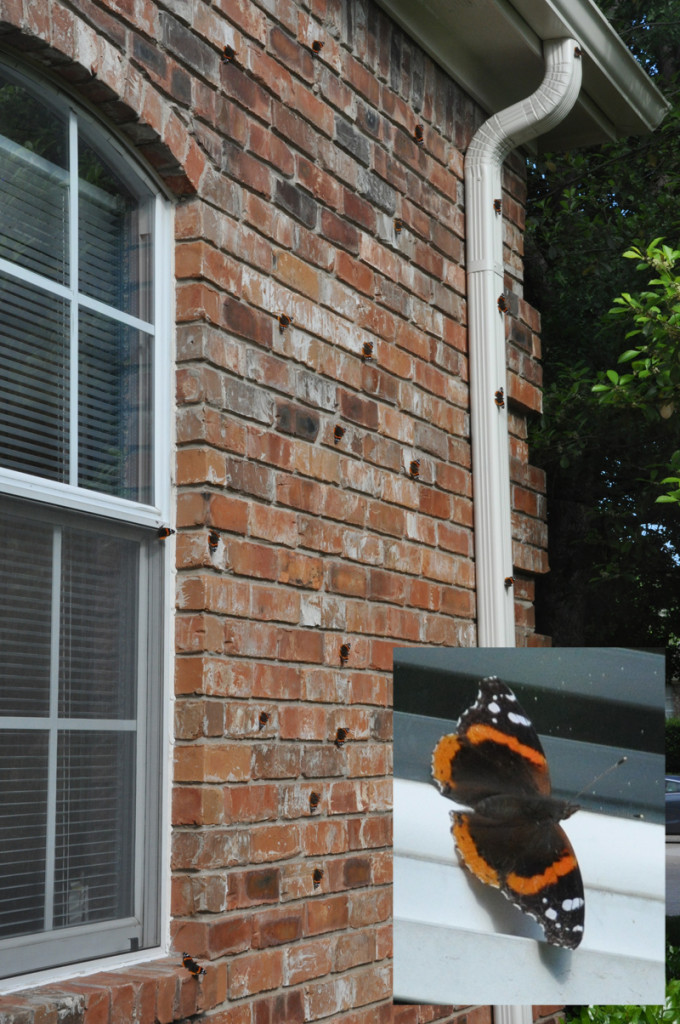
Migratory red admiral butterflies in Plano, TX last week. Such migrations are usually short-lived as butterflies move through an area. Photo courtesy Rich and Nikki Lefebvre.
In case you haven’t been paying attention, this spring has been great for butterfly and moth watchers in Texas. A few weeks ago I noted the abundance of armyworm moths, and last week I had several questions about all the butterflies on the wing. This week county extension agents in west Texas reported large numbers of the migratory army cutworm in and around towns. The picture accompanying this article was sent by Rich and Nikki Lefebvre, Master Naturalists in Plano. It shows an impressive number of red admiral butterflies on the side of their suburban house. Red admiral butterflies, monarch butterflies and army cutworms are all examples of Lepidoptera (lep ih DOP tura–the Order name for moths and butterflies) that exhibit migratory behavior. Hence the high numbers of these species are just “passing through” on their way to somewhere else. If you are lucky enough to witness one of these migrations, get out your camera now because they typically don’t last long.
I’ve been asked many times for an explanation for these “outbreaks” of moths and butterflies. The only answer I can give is that favorable weather can increase survival of many lepidopterous species. This year a mild winter combined with a wetter than average spring has likely favored survival of overwintering butterfly and moths. The rain also favors food plants, which helps sustain a population spurt.
Sometimes the answer is likely to be more complex. For example, I’ve received several calls about caterpillars defoliating oak trees in counties to the north and west of Dallas, along the Red River. This appears to be Cissusa spadix, the caterpillar of the black-dotted brown moth, which is known for its occasional outbreaks. This insect has likely benefited not only from the mild winter, but also a slow population buildup for a year or more. Many factors go into caterpillar and butterfly “invasions”, including weather, food availability, past population trends and the presence of natural enemies.
For a listing of butterfly species currently being seen in north Texas, check out the Dallas County Lepidopterist’s Society webpage, and click the link on the left lower side labeled “What’s on the Wing”.